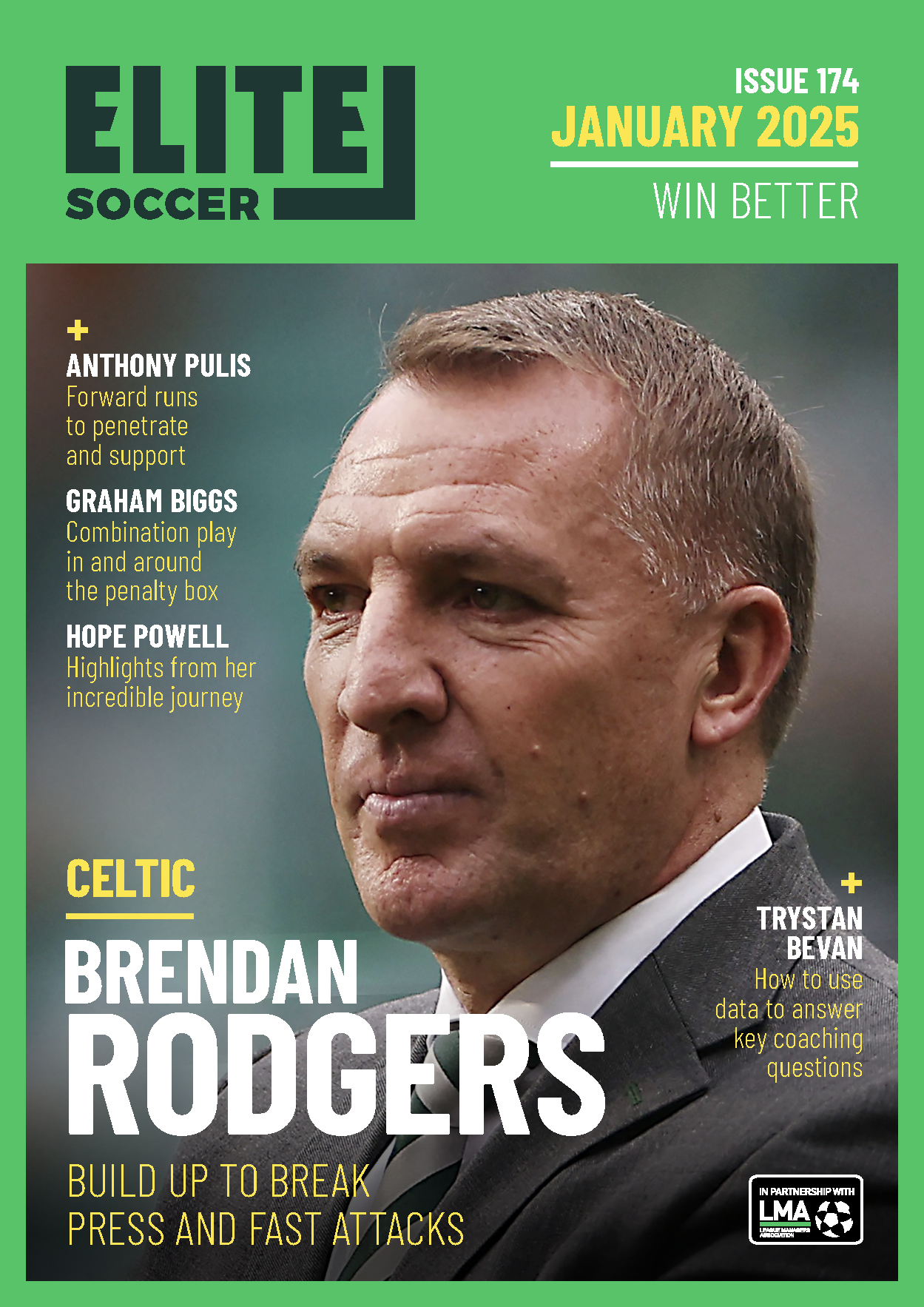You are viewing 1 of your 1 free articles
Playing through midfield
Playing through midfield with confidence and precision is vital for any team - use this session to coach players how to receive, pass and work space, linking defence with attack.
| Area | Up to 54x25 yards |
| Equipment | Balls, cones, goals |
| No. of Players | Up to 16 |
| Session Time | 15mins per game |
Playing through midfield with confidence and precision is vital for any team and it’s essential we coach players in how to receive, pass and work space, linking defence with attack.
The session takes the form of three different practices. Within these, we vary the size of the playing area, and encourage creativity in midfield through different formations, in order for players to feel comfortable working in the ever-changing conditions they will experience on match day.
What do I get the players to do?
Boxes challenge
We setup 3v1 in each box, and the ball has to be played from end to end through the middle section (1a).
1a
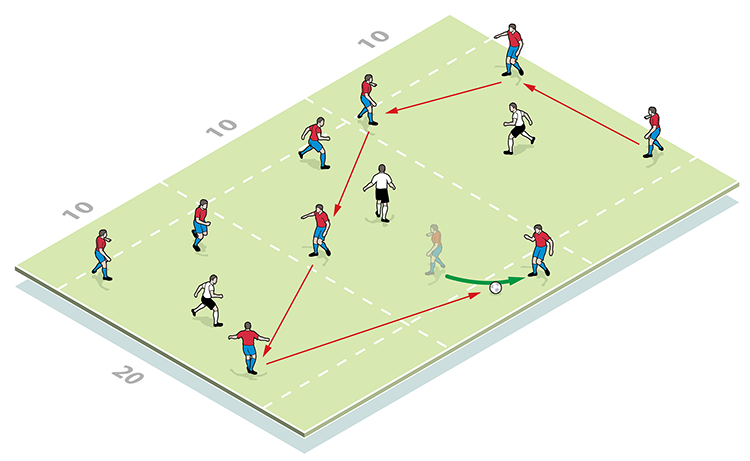
We will vary what we want to see from each move - for example, three passes requested in each section to improve technical skills and movement. Alternatively, two balls can be played at the same time to improve awareness (1b).
1b
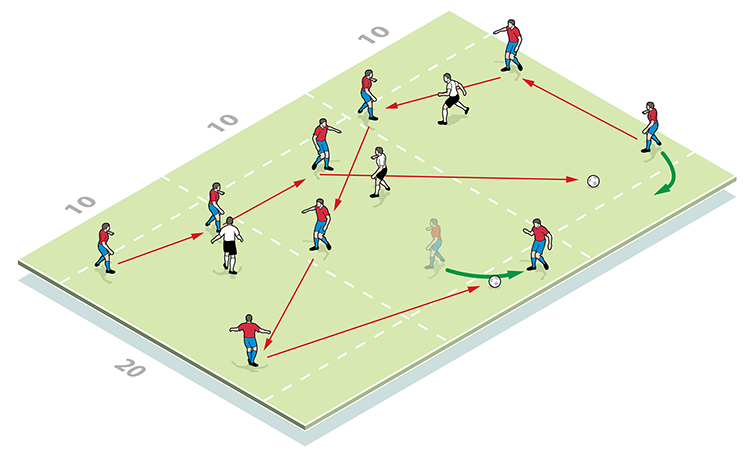
Outer sections can be used to give attacking players more time on the ball, because defenders cannot track in those areas. But any ball received on the outside must then be played back into a central section.
Middle channel challenge
Now we move into a 5v5 game. The middle section is a free zone that defenders are not allowed into. The team in possession (whites) can position three midfielders in the zone. If the ball is successfully passed into this area, they can attack defenders 3v2, looking to score in any goal (2a). When out of possession, they must vacate the middle zone and the other team will go in there, while a quick turnover of possession can spark a counter-attack (2b).
2a
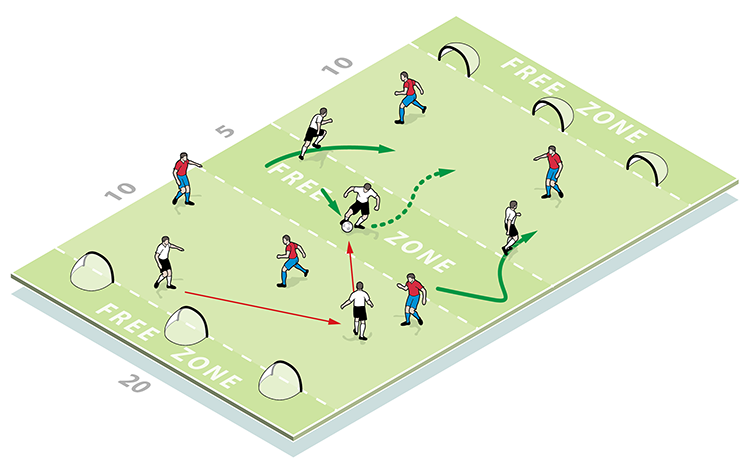
2b

Sections challenge
In the final set-up, teams must go through midfield on each attack. After playing this as a standard 2-2-1, we apply various progressions. At first, attacking players can move from the middle to the end section to create a 2v2. Defenders cannot follow, nor for the next progression, where an attacker can drop into the middle section (3a). But in the final progression, when players support or drop into a different zone, opponents are allowed to follow (3b).
3a

3b
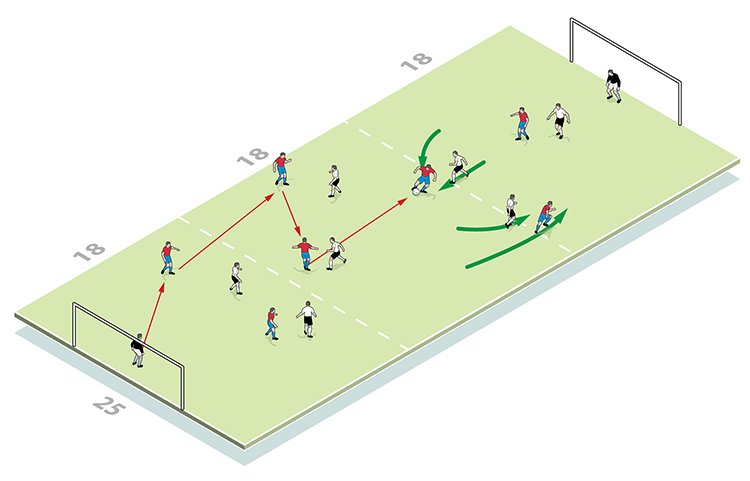
A number of different passing systems can be used with this session – 2-3-1, 2-3-2, 3-4-2, 3-3-2 and more.
What are the key things to look out for?
We’re looking for movement to receive and a good body shape, so the player can see both goals. Smart decision-making – knowing when and where to pass – is important, as are passes to feet at a sensible weight. Timing of runs from midfield is obviously key, as is support in front or behind, plus distances and angles of passes.
Related Files
Editor's Picks
Using the goalkeeper in build-up play
Pressing principles
Intensive boxes drill with goals
Penetrating the final third
Creating and finishing
My philosophy
Pressing initiation
Compact team movement
Defensive organisation
Coaches' Testimonials

Alan Pardew

Arsène Wenger

Brendan Rodgers

Carlos Carvalhal

José Mourinho

Jürgen Klopp

Pep Guardiola

Roy Hodgson

Sir Alex Ferguson

Steven Gerrard
Coaches' Testimonials

Gerald Kearney, Downtown Las Vegas Soccer Club

Paul Butler, Florida, USA

Rick Shields, Springboro, USA

Tony Green, Pierrefonds Titans, Quebec, Canada
Join the world's leading coaches and managers and discover for yourself one of the best kept secrets in coaching. No other training tool on the planet is written or read by the calibre of names you’ll find in Elite Soccer.
In a recent survey 92% of subscribers said Elite Soccer makes them more confident, 89% said it makes them a more effective coach and 91% said it makes them more inspired.
Get Monthly Inspiration
All the latest techniques and approaches
Since 2010 Elite Soccer has given subscribers exclusive insight into the training ground practices of the world’s best coaches. Published in partnership with the League Managers Association we have unparalleled access to the leading lights in the English leagues, as well as a host of international managers.
Elite Soccer exclusively features sessions written by the coaches themselves. There are no observed sessions and no sessions “in the style of”, just first-hand advice delivered direct to you from the coach.



